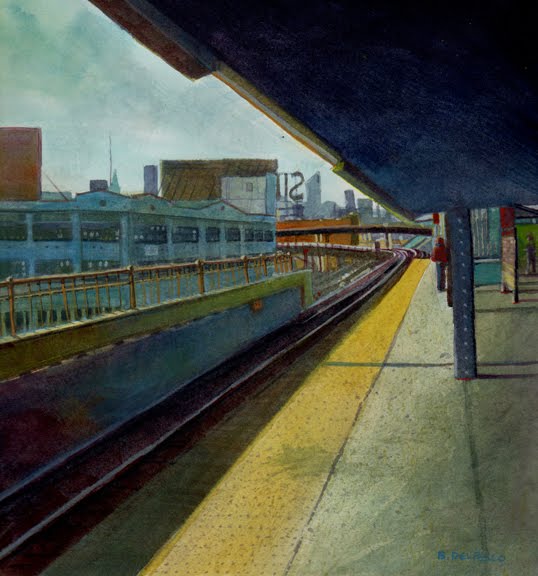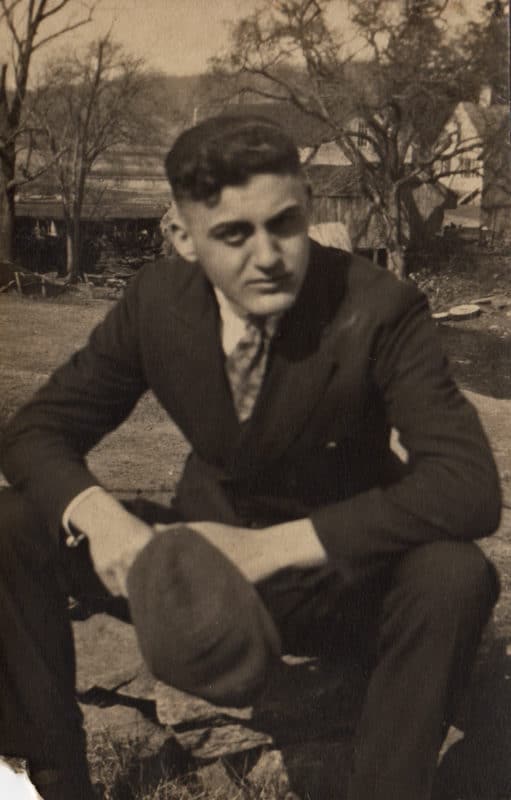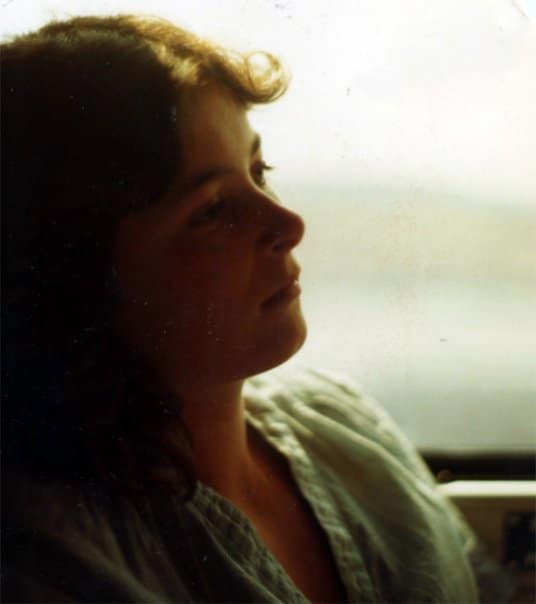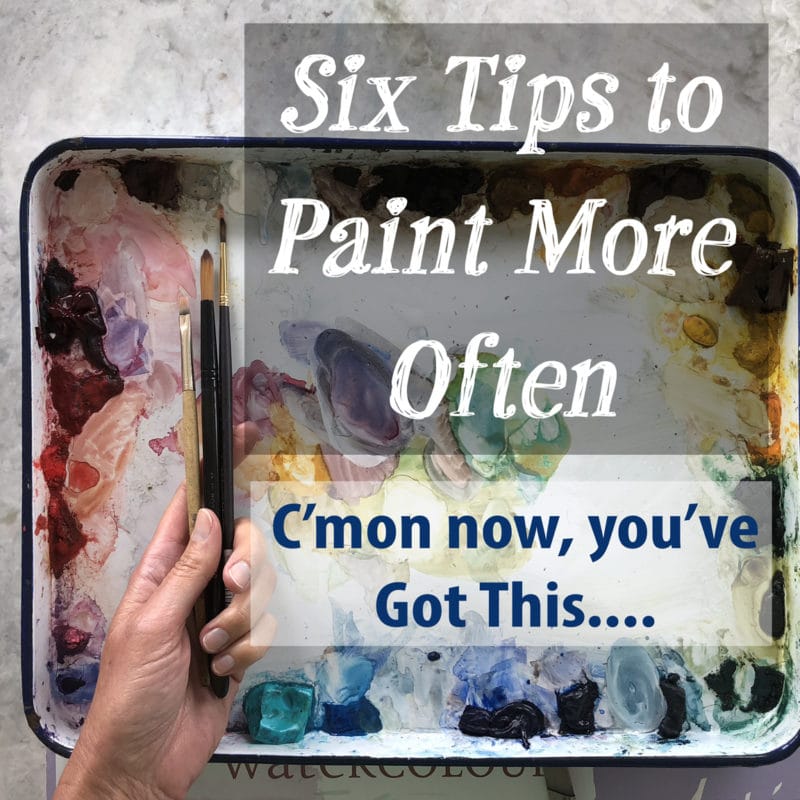Watercolors of Places
I’m fortunate to have a gaggle of friends and family with abundant creative mojo for lassoing photos as potential painting fodder.
Padded envelopes of hard copy photos arrive in the mail, and text messages with artfully cropped vistas (usually fresh from the moment the image was captured) pop up on my phone. A variety of seascapes, garden shots and figurative photos land in my inbox. (Example: The reference imagery used in this painting, this painting and this painting were each generously “loaned” to me by friends and family.)

Far Away from Home
Another great perk of gifted imagery from your squad is the opportunity to paint things that aren’t in close proximity to your zip code. Urban scenes of train platforms in New York City (I live in California), or subjects that don’t usually blip your radar, like the facade of an apartment building make great painting resources.
The reference photo for the painting in this post arrived as a text from friends in Arizona as they were exploring the geometric angles, historic pulse and international cuisine of New York City.
The steady stream of awesomeness I’ve acquired from my talented, eagle-eyed tribe has been an incredible addition to my photo library, and my painting and printmaking inspiration.

Organize Your Library of Photos for Art Reference
I started collecting images that might become paintings when I was about 18 – decades before I became a painter.
My father handed down his Minolta camera as a high school graduation gift. I poured over vintage family photo albums I later inherited as the designated scanner and researcher of our family’s genealogies.
I knew I wanted to show my art, and eventually sell it. Using magazine ads or other people’s photos is a no-no unless it’s for personal use and studies. Anticipating showing and selling my art some day inspired early harvesting. I started snapping photos and stashing them in shoe boxes.

Keeping Track of Your Art Reference Photos
Decades of photo harvesting can lead to stuffed drawers, frustrating searches for that one image of yellow roses, and maxed out hard drives with too many high resolution reference jpegs.
Best studio practices, and preservation of our sanity suggests that it’s a good idea to keep reference photos organized.
One of my Aunties had a studio in her pitched-roof attic, and my Uncle built a set of shallow, wide drawers under a work table for her. The upper drawers held all her pastels sorted by color. The lower drawers were filled like library card-catalogs with indexed art reference photos – from gardens to clouds and still life arrangements.
When I saw it during a visit to Connecticut, I wished I could magically beam my uncle to California to build the same system for me. It was dreamy. 🙂

Art Reference Photo Systems to the Rescue
Digital Image Management is a big deal. Digital images of our finished work documented with size, title, location, and media is a time consuming and important image database to manage. (You can read a thread in the comments of this post of a lament related to the short-life of most free artists’ inventory software with my friend Karen Winters.
You can pay for a robust inventory system used by galleries, or you can build an inventory system for your paintings using excel.)
I keep hard copy art reference images in three ring binders, tucked into archival sleeves, sorted by subject.
My digital art reference material – as well as scans of finished artwork – are each sorted the same way on my computer, and everything is backed up to an external hard drive.
What software do you use for keeping track of your art, and your art reference library?

Mining Your Own Images for Inspiration
Occasionally, while flipping through my image library – interiors, faces, still life, etc, my excited ambition thwarts my common sense.
The piles of photos I’m going to paint (that day, or that week) pool across my studio floor, my table, and my cork board in shiny mounds of ideas, fluttering with post-it-note wings, scribbled with details to edit or combine, etc.
Later, I have to put them all back, because I surrender to the sad fact that I can’t paint that many finished pieces in a week.
Plus, the chaos of clutter steals my attention when I’m trying to focus on making something. Order helps my creative focus – in the studio, and on my hard drive.
But beauty has been known to make people get carried away, and I’m a card-carrying member of that club.
What systems do you use in your studio to keep track of favorite photos? How do you queue up the next painting images or a new series?


Art Night with Friends
The Queensboro Train platform painting at the top of this post started during an art-date with five friends. I can’t encourage you effusively enough to plan art-nights with friends if you’re not painting often enough.
Accountability is a great motivator to those of us who answer to others more promptly than we answer to ourselves.
Knowing there are friends gathering – and they’re expecting you to show up – can be just enough motivation to make you commit to your art making plans.
Plus, the camaraderie is a special sauce on the time spent Making-Stuff.

Helpful Links to Manage Art Reference photos
- Here are Six Tips for Organizing Your Digital Images
- I’ve used this company many times to scan boxes and boxes of photos and slides I want to preserve digitally, and I highly recommend them.
- Pinterest board imagery with tips for organizing your art studio
- An essay on ways to schedule, plan and organize your painting time.
If you know of helpful resources related to image storage, studio organization, database building, please share in the comments! Anything that will streamline the business and organizational end of being a creative person is helpful. We get better at this stuff together, so please share. Thanks!
Thanks for stopping by today, and I’ll see you in the next post!
Belinda
P.S. You can subscribe to receive these posts via email as soon as they’re published by signing up (free) here.

Art Quote
While living in Monterey, Percy Gray would take students on painting trips to Marin & Sonoma counties. He would sketch on location, later creating finished works in his studio. He worked in oil, yet is best known for his paintings in watercolor. These quiet, lyric paintings are distinctly characteristic, following the English tradition of carefully applied, transparent washes. He noted that he was not so much painting the scene as he was painting the atmosphere.
~E. Milton Hughes


Yes I was very moved at the very end of the audiobook, so much so that I got a print copy from the library and typed some excerpts from the last 3 pages – because I needed to read it again and again! A very Dostoyevskyan take on life actually.
“Order helps my creative focus”! So true Belinda. Also I wanted to pass long another audio-book suggestion…(but I suspect you may have already listened to it or have it on your list!): In case not, here’s some info: Title: The Goldfinch by Donna Tartt – 26 CD’s and I didn’t want it to end, that’s how much I loved it!. The narrator is the best I’ve heard yet – he can modulate his voice to fit all the characters. I was so curious to find out more about the painting on which the title is based and came across this interesting article: https://www.theguardian.com/artanddesign/jonathanjonesblog/2016/oct/21/the-goldfinch-carel-fabritius-scottish-national-gallery.
As you know, I took a hiatus from painting/sketching to return to music. But your regular blogs, and in particular this one, have ensured that art-making didn’t get locked away forever. I just came back from spending a week with an old boarding school friend (in the 60s) who recently lost her husband. Needless to say, the piano didn’t fit in my backpack so I dug out my watercolor sketching gear and did two plein air sketches while I was there. This reminded me how much I enjoy the process (and solely for my own enjoyment). Also years ago, I filled numerous sketch books of musicians during live performances – so why not mell my love of art and music…..I think I know the direction I need to go in!
Hello there, you. Thanks for the nice comment and the book recommendation. I’ve heard good things about both the author and the book, and about how some of my friends couldn’t stop crying at the end. Did you feel that way too?
I’m sorry your dear friend suffered such a loss. 🙁 It’s so good that you two could spent time together. And there was painting too!
Welcome back to your pigments and paper, and cheers and tea on the concept of mixing painting and music! I hope you’re having so much fun!
You’ve done it again–read my mind, this time about organizational tips on reference photos, etc. Now that I am following your 6 Tips and really moving in a positive direction (yeah!) painting every day, I find my work space cluttered with reference photos everywhere. Your suggestions on organizing these materials came just in the knick of time! I’ll keep you posted on what is working for me and what isn’t! Thanks again for all of your insight into this art adventure!
Hah-hah-hah – Hi Judy! We’re mind-melding! Yayyy! And you’re painting! Whoot-whoot!!!! GREAT JOB! I’m *so* glad to hear this! And I’m grateful for the feedback on Six Tips to Paint More! The fact that it’s working for you has put a grin on me that will last all morning! Thank you, thank you, and Paint-on, sweetie!